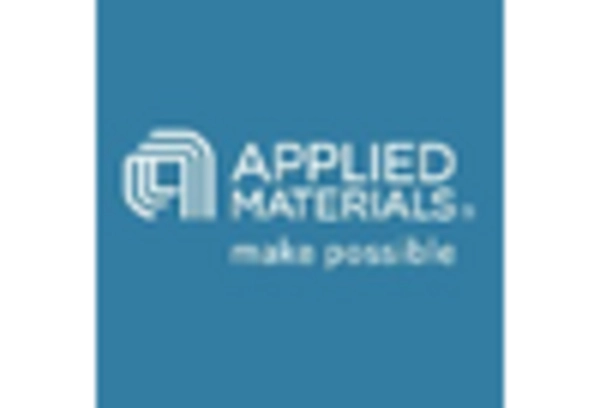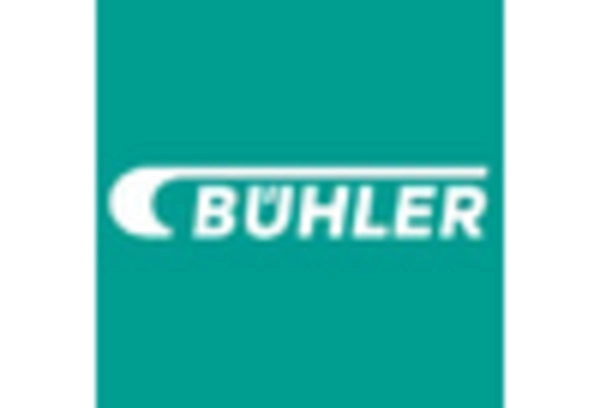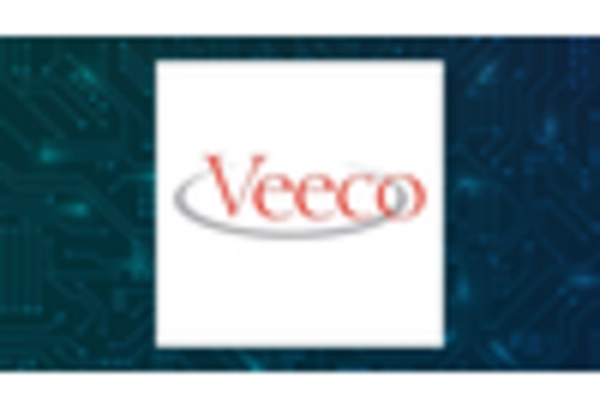Growth in Automotive Applications
The automotive industry is increasingly adopting vacuum coating technologies, which is significantly impacting the vacuum coating-machines market. With the rise of electric vehicles (EVs) and the need for lightweight materials, manufacturers are turning to vacuum coating to enhance the performance and durability of automotive components. For instance, coatings applied to parts such as mirrors, windows, and interior elements not only improve aesthetics but also contribute to energy efficiency. The automotive sector is projected to grow at a CAGR of 4.5% through 2025, further driving the demand for advanced coating solutions. As automakers seek to differentiate their products in a competitive market, the vacuum coating-machines market is poised to expand in response to these evolving requirements.
Rising Demand in Electronics Sector
The vacuum coating machines market is experiencing a notable surge in demand, particularly driven by the electronics sector. As consumer electronics continue to evolve, manufacturers are increasingly utilizing vacuum coating technologies to enhance product performance and aesthetics. This trend is evidenced by the projected growth of the electronics industry, which is expected to reach $1 trillion by 2025. The need for high-quality coatings in devices such as smartphones, tablets, and wearables is propelling the adoption of vacuum coating machines. Furthermore, advancements in coating materials and techniques are enabling manufacturers to achieve superior finishes, thereby increasing the appeal of their products. Consequently, the vacuum coating-machines market is likely to benefit from this growing demand, as companies strive to meet consumer expectations for quality and innovation.
Regulatory Support for Advanced Manufacturing
Regulatory frameworks in the US are increasingly supportive of advanced manufacturing practices, which is positively influencing the vacuum coating-machines market. Government initiatives aimed at promoting innovation and sustainability are encouraging manufacturers to adopt advanced coating technologies. For example, programs that provide funding for research and development in manufacturing processes are likely to enhance the capabilities of vacuum coating machines. Additionally, regulations that promote energy efficiency and environmental sustainability are pushing companies to invest in more efficient coating solutions. This regulatory support not only fosters growth in the vacuum coating-machines market but also aligns with broader industry trends towards sustainable manufacturing practices.
Emerging Applications in Aerospace and Defense
The vacuum coating machines market is witnessing growth due to emerging applications in the aerospace and defense sectors. These industries require high-performance coatings for components that must withstand extreme conditions, such as high temperatures and corrosive environments. Vacuum coating technologies are being utilized to enhance the durability and performance of critical components, including turbine blades and electronic systems. As defense budgets increase and the aerospace sector expands, the demand for advanced coating solutions is expected to rise. This trend indicates a promising future for the vacuum coating-machines market, as manufacturers seek to provide innovative solutions that meet the stringent requirements of these high-stakes industries.
Increased Investment in Research and Development
Investment in research and development (R&D) within the vacuum coating-machines market is fostering innovation and enhancing product offerings. Companies are allocating substantial resources to develop advanced coating technologies that improve efficiency, reduce costs, and expand application areas. This focus on R&D is crucial as it enables manufacturers to stay competitive in a rapidly evolving market landscape. For instance, the introduction of new materials and processes can lead to coatings that are not only more effective but also environmentally friendly. As the market continues to evolve, the emphasis on R&D is likely to drive growth, with companies striving to meet the diverse needs of various industries, including electronics, automotive, and aerospace.

















Leave a Comment